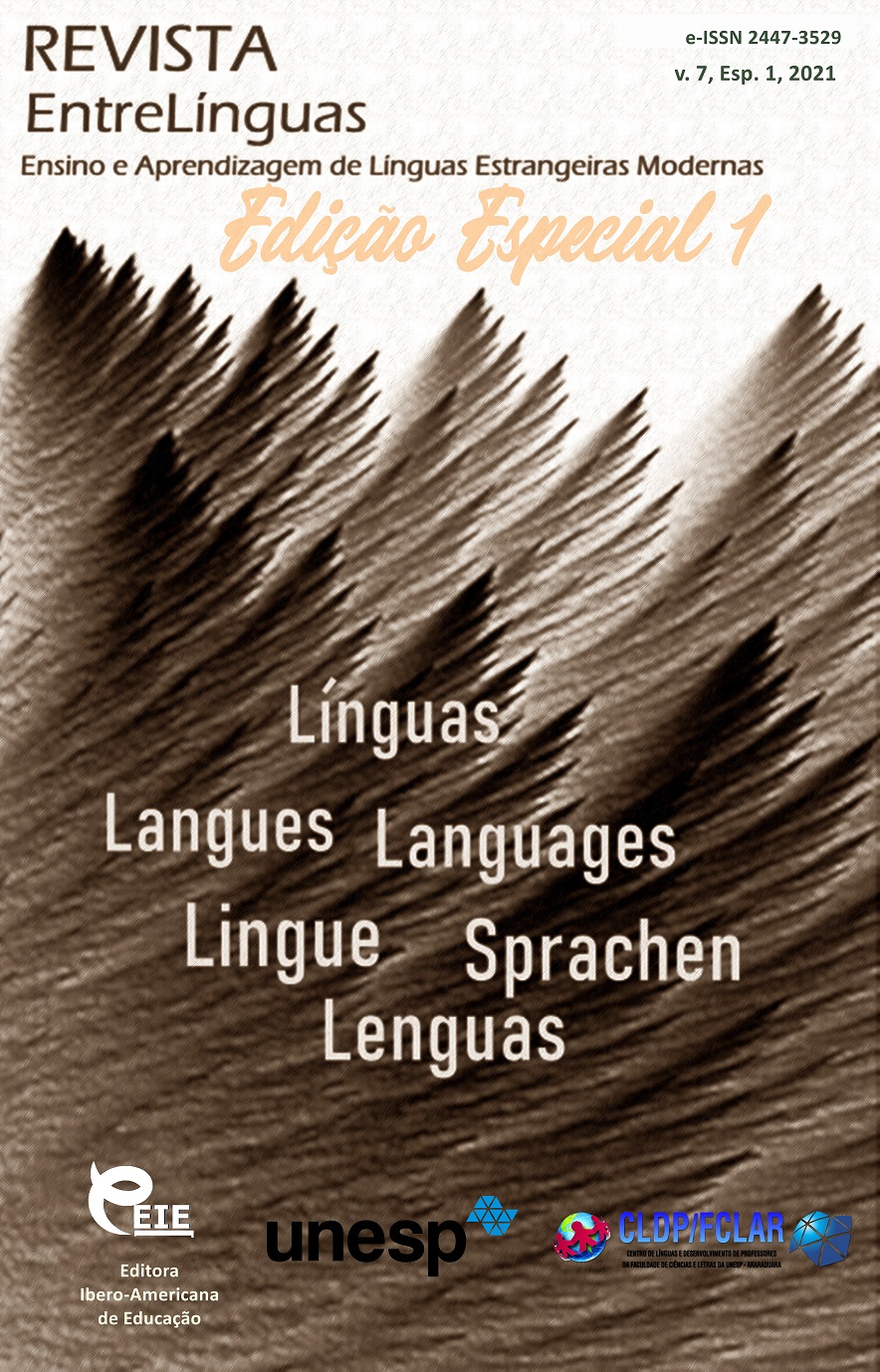Use of information technologies in the formation of foreign language communicative competence
DOI:
https://doi.org/10.29051/el.v7iEsp1.14890Keywords:
Information technology, Video conference, Distance learning, Interactive educational environment, Interactive cooperation, Communicative competence, Foreign languagesAbstract
This article is devoted to didactic and methodological aspects of using information technologies for the development of foreign language communicative competence and assessing the degree of its formation among students. The aim of the study was to determine the didactic conditions for the use of the video conferencing mode as one of the methodological tools to improve the effectiveness of teaching foreign languages at the university, organized both in full-time and in distance. The main empirical research method was experimental training, the evaluation of the results of which was carried out on the basis of specially developed criteria. The study showed that the high didactic potential of this type of modern information technology, such as video conferences with native speakers of a foreign language, which can be realized with competent methodological support, including preliminary planning, preparation and thorough study of all aspects and stages of the lesson. At the same time, the directing and coordinating activity of a teacher who acts as a moderator of educational activities in the lesson is necessary. Assessment of students' speech skills should be conducted in accordance with clear criteria. Subject to the identified didactic conditions, the educational process is enriched with new organizational forms, cognitive independence of students is developing, cognitive interest is stimulated, and positive motivation for learning a foreign language is increased.
Downloads
References
ABDULLINA, L. R. et al. The information educational technologies in the development of students' cognitive self-study and practical autonomy. Ad Alta-Journal of Interdisciplinary Research, v. 7, n. 2, р. 81-83, 2017.
DEJEAN, C.; MANGENOT, F.; SOUBRIE, T. Apprentissages formels et informels, autonomie et guidage. Actes du colloque EPAL 2011, Université Stendhal, p. 9-15, 2011.
FAHRUTDINOVA, R. A.; FAHRUTDINOV, R. R.; YUSUPOV, R. N. The Model of forming communicative competence of students in the process of teaching the English language. International Journal of Environmental & Science Education, v.11, n. 6, p. 1285-1294, 2016.
KHASANOVA, O.; SHEMSHURENKO, O.; KARIMOVA, A. Skype technology in developing speaking skills in teaching ESL. 2016.
LI, C.; IRBY, B. An overview of online education: Attractiveness, benefits, challenges, concerns and recommendations. College Student Journal, v. 49, n. 2, p. 449-458, 2008.
MAMAEVA, A. D.; VASSILIEVA, V. N.; GALEEVA, G. I. The Experimental Research of Techno-R Technology in Teaching the Aspect of speaking a Foreign Language as a type of Vocal Activity. Revista Publicando, v. 4, n. 13, p. 517-525, 2018.
MARTIN, J. Developing course material for online adult instruction. Journal of Online Learning, v.5, n. 2, p. 364-371, 2009.
NAZAROVA, G. I. et al. Designing The Technologies of Teaching Written Business Communication in the French Language For Universities. Revista TURISMO: Estudos e Práticas, v. 2, 2019.
SHARIPOVA, D. Y. et al. Improving the quality of professional training of students in the distance learning. Man in India, v. 97, n.3, p. 401-416, 2017.
VARLAMOVA, M. Y.; BOCHINA, T. G.; MIFTAKHOVA, A. N. Interactivity in teaching a foreign language. J. Lang. Lit, v. 7, n. 3, p. 190-194, 2016.
VASSILIEVA, V. N.; KUZMINA, E. K. Capabilities of Techno-R Technology in The Improvement if Education Quality in The Field of Teaching Foreign Languages. Modern Journal of Language Teaching Methods, v. 8, n. 11, p. 259-264, 2018.
Downloads
Published
How to Cite
Issue
Section
License

This work is licensed under a Creative Commons Attribution-NonCommercial-ShareAlike 4.0 International License.
Os manuscritos aceitos e publicados são de propriedade da Revista EntreLínguas. Os artigos publicados e as referências citadas na Revista EntreLínguas são de inteira responsabilidade de seus autores.
Transferência de direitos autorais – autorização para publicação
Caso o artigo submetido seja aprovado para publicação, já fica acordado que o(s) autor(es) autoriza(m) a UNESP a reproduzi-lo e publicá-lo na EntreLínguas, entendendo-se os termos “reprodução” e “publicação” conforme definição respectivamente dos incisos VI e I do artigo 5° da Lei 9610/98. O artigo poderá ser acessado pela rede mundial de computadores (Internet), sendo permitidas, a título gratuito, a consulta e a reprodução de exemplar do artigo para uso próprio de quem a consulta, desde que haja a citação ao texto consultado. Essa autorização de publicação 328 EntreLínguas, Araraquara, v. 1, n .2, p. 323-328, jul./dez. 2015 não tem limitação de tempo, ficando a UNESP responsável pela manutenção da identificação do(s) autor(es) do artigo. Os artigos publicados e as referências citadas na Revista EntreLínguas são de inteira responsabilidade de seus autores.











